Reykjavik in January might seem like a strange city break choice.
But, with hours-long sunrises and sunsets only within a few hours of each other that ensure the city is always lit in a golden hue, a chic Nordic vibe in the shops, restaurants and street art, a plethora of museums that delve into the history and culture of this unique country and plenty of day trips to Icelandic winter wonderlands like Thingveller National Park, a winter break to Reykjavik is likely to exceed your expectations.
I’ve recently got back from a winter trip to Reykjavik, and while it was extremely chilly (it got to around -10°C in the city, which is cold even for Reykjavik!) and daylight hours were minimal, the city glowed in the few hours of bright winter sunshine each day and it was a fascinating snapshot into everyday Icelandic life.
While there are some activities you won’t be doing in Reykjavik in winter, I found that most of its highlights and day trips were still open and operating throughout the season.
The capital has plenty of indoor attractions, and any nature-based activities have a completely different – but still incredible – look during the winter months when they’re covered with a blanket of snow.
Here are the top reasons to visit Reykjavik in January!
Reykjavik in January: why you should plan your next trip here!
Reykjavik in January means sunrises that turn the sky orange for hours, bright winter sunshine dancing off snow, Northern Lights illuminating the dark nights, bright houses lining the snowy streets and freezing mornings warmed up with a dip in the thermal springs.
There’s a high chance of seeing the Northern Lights
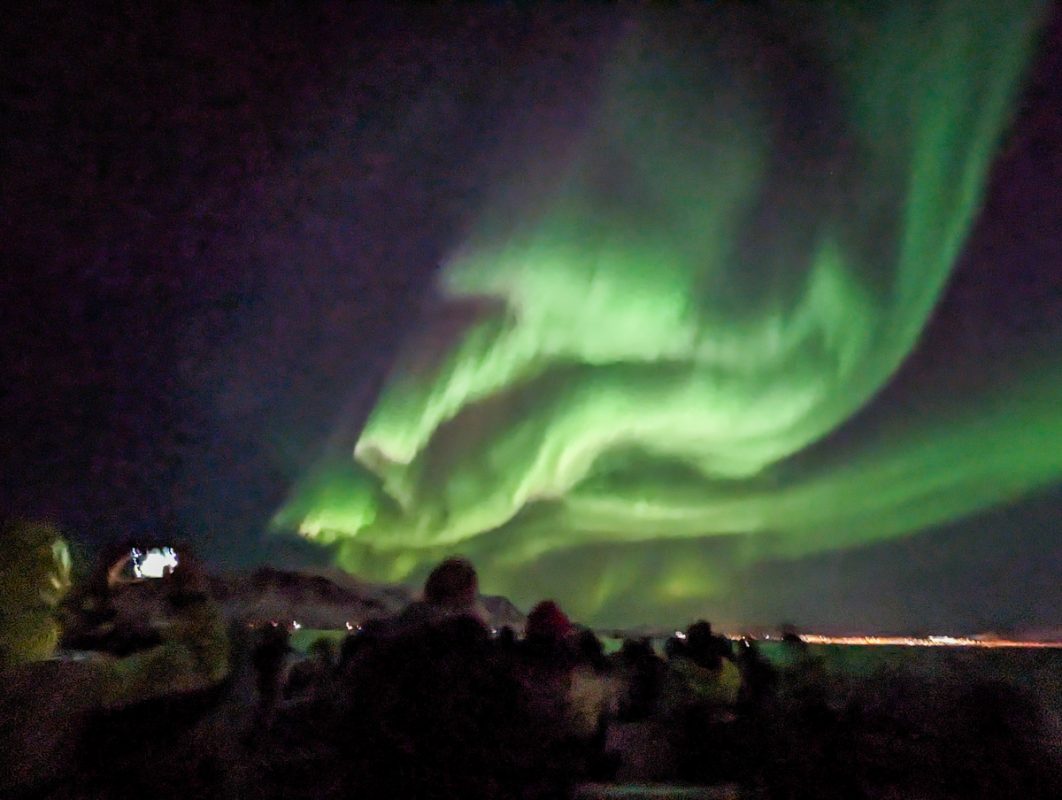
The phenomenal Northern Lights are, without a doubt, one of the best reasons to visit Reykjavik in January.
January is one of the darkest months of the year, which means lots more opportunities to spot the ubiquitous Northern Lights.
These lights, also called the aurora borealis, occur when charged particles from the sun hit the earth’s atmosphere. These particles create dancing waves of light, usually green, but sometimes pink or other colours.
They’re a breathtaking display of dancing lights and Iceland is one of the best places to see them.
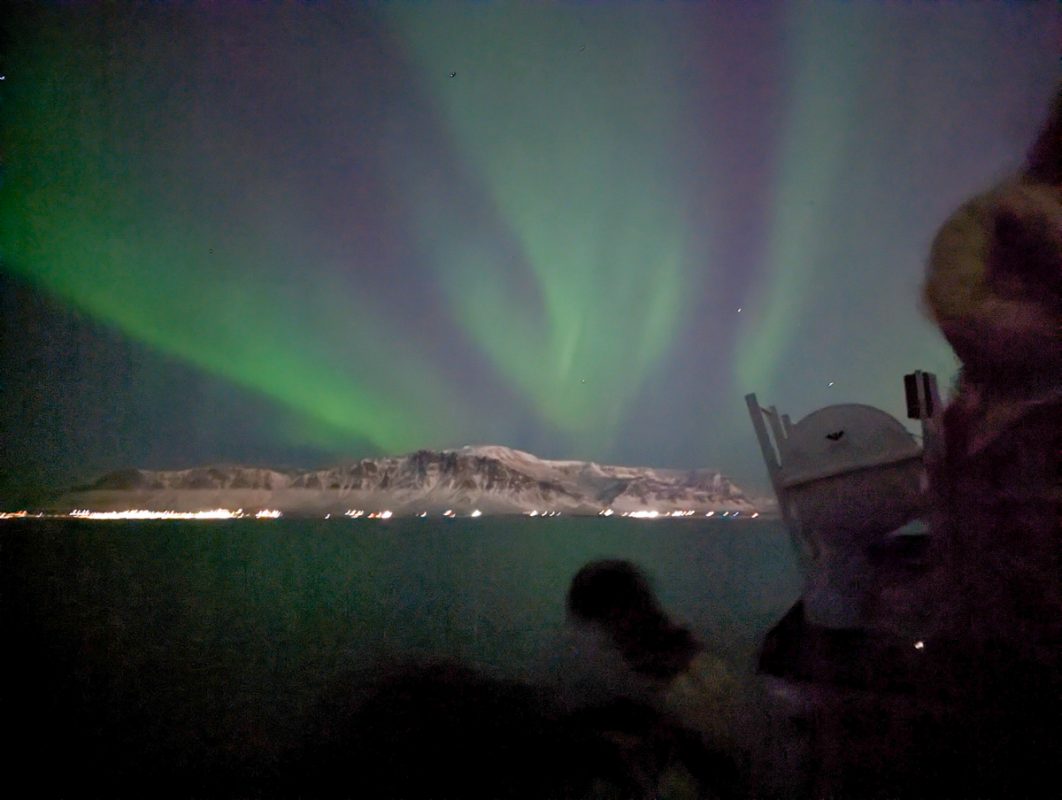
However, the chance of seeing the Northern Lights largely relies on the weather conditions; they’re most visible on clear, cold nights.
We saw the Northern Lights on a boat tour from Reykjavik, which included two hours sailing away from the harbour (away from the city lights!), a knowledgeable guide who explained all that we need to know about the Northern Lights, overalls to borrow and the chance to buy hot drinks and waffles at the indoor bar.
There was an observation deck at the top of the boat (it’s also used for whale watching) and a large indoor seating area.
Read more about the tour here.
Sunrises and sunsets last for hours
In the summer, you get midnight sun, but in the winter, you get beautiful sunrises and sunsets just a few hours apart; so it feels like the whole day is caught in a gorgeous dusky glow.

You don’t need to wake up early to catch the sunrise in Reykjavik in January; you don’t see the first signs of light until 9:30 am, and it only feels properly like daylight after 11 am.
The sun drops in the sky by 3:30 pm, tainting the sky with another palette of warm hues.
I’d recommend taking in the sunrise by strolling along the Sculpture and Shore Walk. Or, head up to the top of Hallgrimskirkja (which opens at 10:00am) to watch the city illuminate beneath you.
The sun stays low once it’s up, bouncing off the mountains and bright buildings and creating gorgeous photos any time during sunlight hours!
Snow is likely!
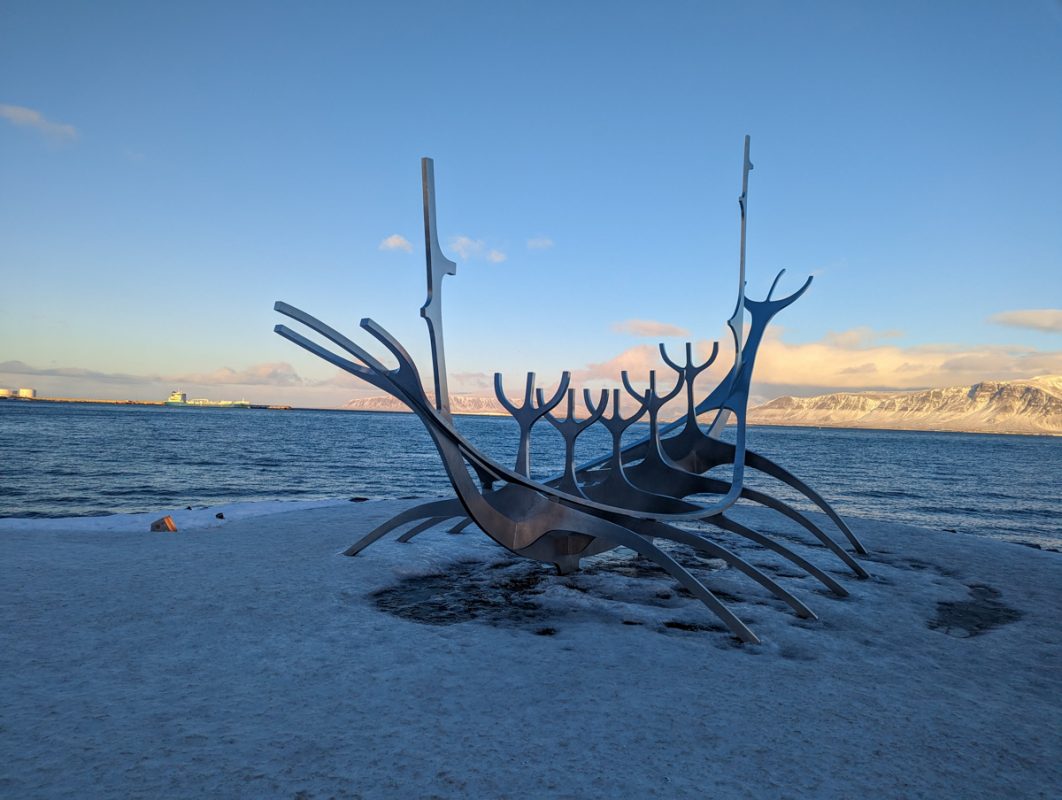
Despite the name, Iceland isn’t actually usually that cold in winter.
It can be icy – sure – but the temperature usually hovers around freezing point, which means that while snow is likely, it isn’t a certainty.
That being said, it was cold when I was in the country (down to -10C in the city and -16C in the national park!), and the entire land was frosty!
Snow is frequent on a January trip to Reykjavik, turning the city into a true winter wonderland as the light dances on the brilliantly white landscape.
There’s plenty of hearty Icelandic food to enjoy
While the food in Iceland can be pricey, it’s hearty and delicious.
The nation and seafood go hand in hand (you might have read about the Cod Wars, which were disagreements between the UK and Iceland about fishing in the North Atlantic!), and there are plenty of Icelandic fish and chip shops dotted along the harbour.
There are also plenty of international restaurants in Reykjavik, including a lot of Vietnamese restaurants (which is my favourite cuisine!), pizzerias and Mexican eateries.

So if you want to visit Iceland for gastronomy, winter is a fantastic time to hole up in a restaurant and sample a few specialities!
And you can hop around the city, enjoying chic Nordic shops and cafes
One of the main reasons to visit Reykjavik at any time of year is to engage in Icelandic culture.
You can do this by walking around the city centre (Rainbow Street or Skólavörðustígur, close to Hallgrimskirkja is one of my favourite spots!), visiting atmospheric cafes like Mokka Kaffi where you can enjoy warm drinks like tasty hot chocolate or steaming coffees.
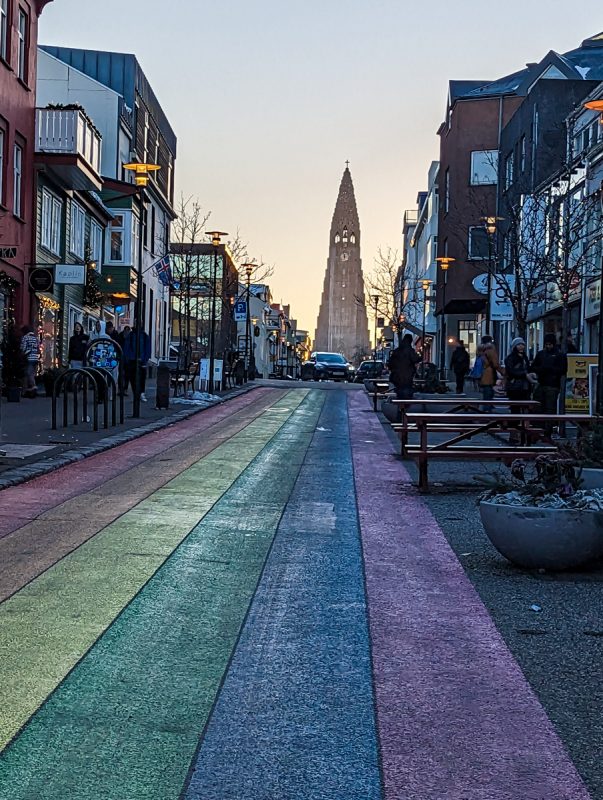
Sit inside a cosy cafe, savouring your drink, or take it to go and let it warm you up as you see the frosty sights.
As you walk around Reykjavik, look out for street art – it has some of the best in Europe!
The city is well-equipped for freezing conditions
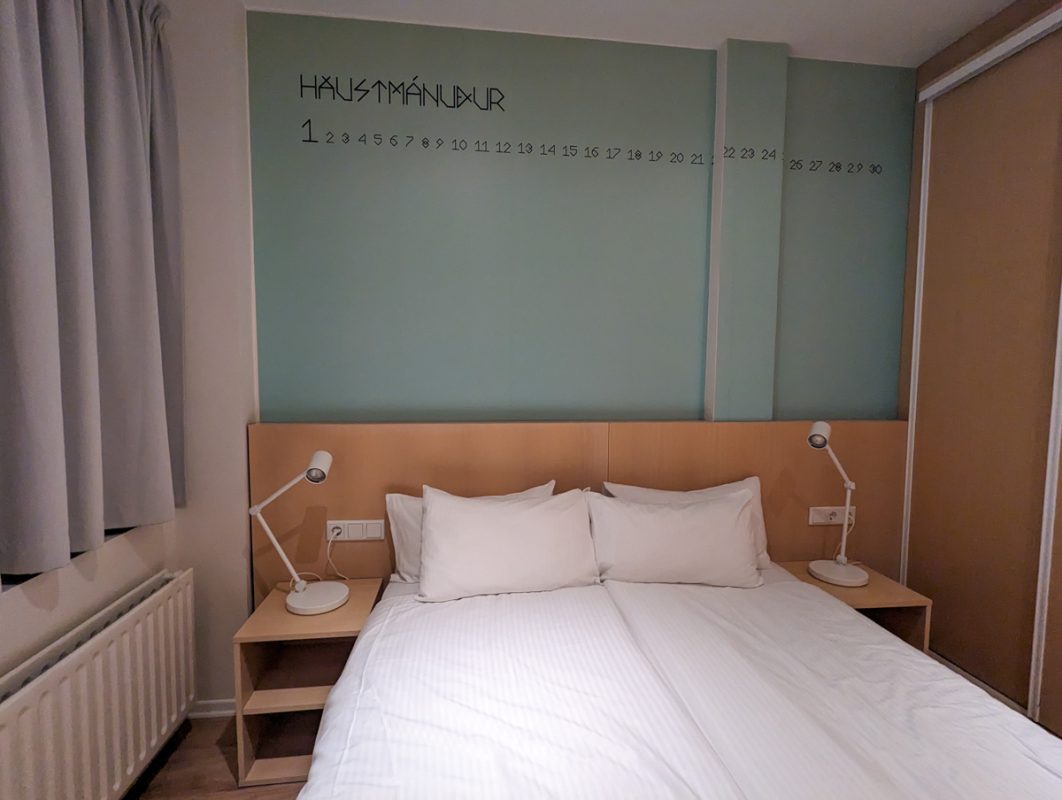
Thanks to its geothermal activity, hotels and apartments in Reykjavik have an abundance of hot water and they store heat impressively; our hotel (Reykjavik Lights) was incredibly cosy despite the cold temperatures outside!
Most pavements and roads in the city centre are cleared, although due to the immense snowfall and freezing weather when we were there, there were some icy spots – take some waterproof winter boots!
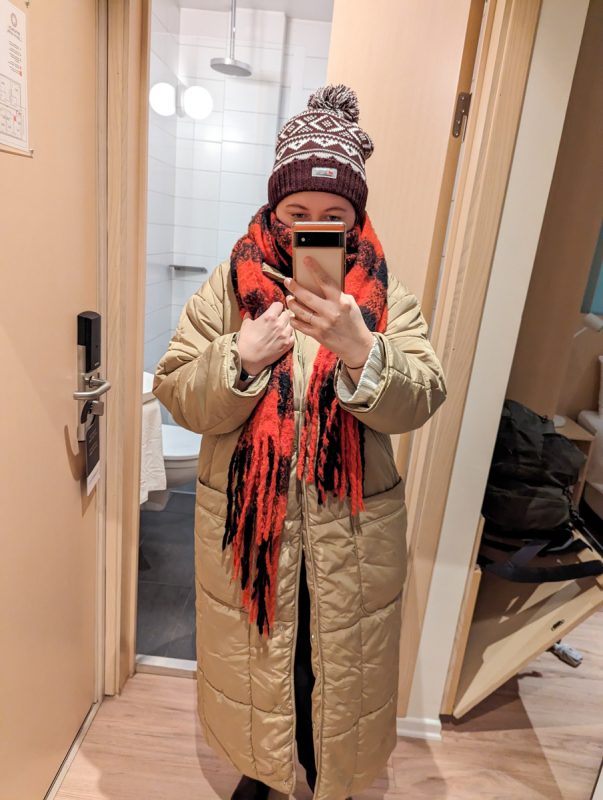

But buses keep running in Reykjavik, even in the coldest temperatures, and attractions and museums will offer you a warm welcome throughout January!
There are plenty of indoor attractions

Being the capital city of a near-Arctic country, Reykjavik does all-weather attractions very well.
There are plenty of indoor attractions in the city that will help you to learn more about the culture and history of the nation.
My top recommendation for visiting Reykjavik at any time of year is Fly Over Iceland. This is a virtual flying experience where you can take in some of the country’s best scenery (as if you’re flying over it!); from its black sand beaches to the most glorious waterfalls.
There are also plenty of museums in the city centre. Whether you want to learn about Vikings, Icelandic history, the epic nature of the land or whales in Iceland, there’s a museum for that!
And thermal baths to warm up in!
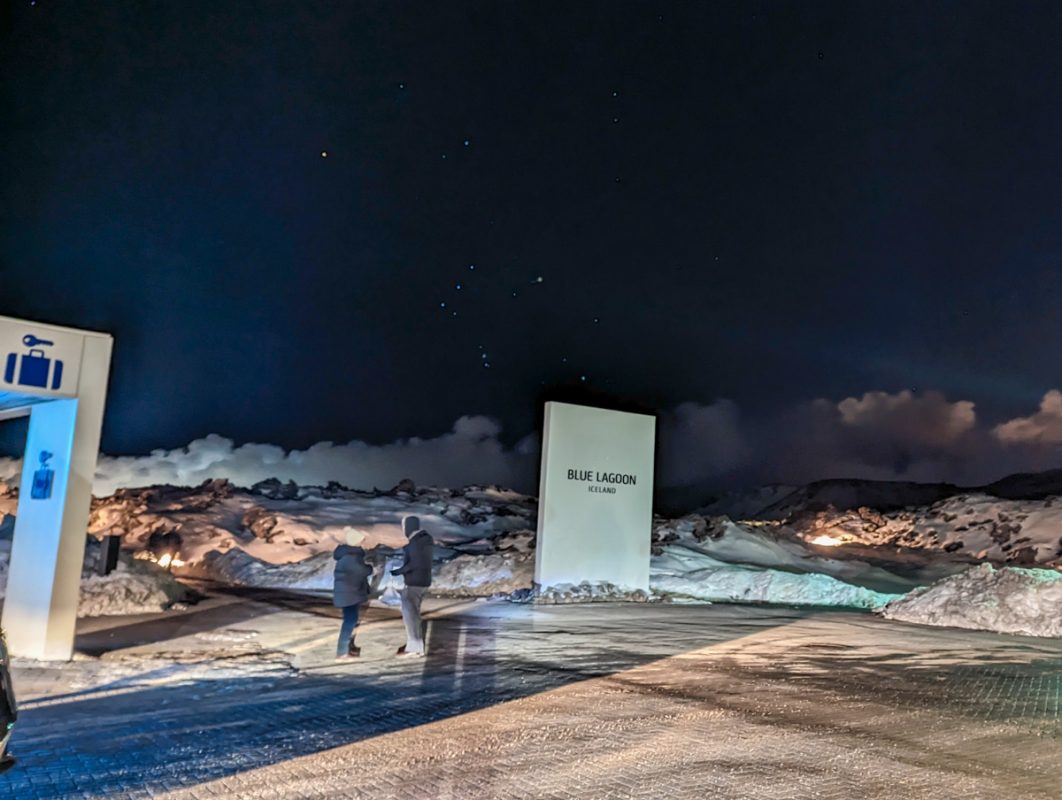
If Iceland’s known for one thing, it’s thermal waters.
And dunking into a hot thermal bath when it’s -10°C/ 14°F out is the ideal way to defrost!
The warm waters of Iceland’s many baths are the ultimate place for relaxation, warmth and socialising.
Blue Lagoon is the most famous, although it sits about an hour from the city centre. All visits here include access to the baths for however long you want, a silfra mud mask and one drink (you can purchase more).
Some packages also include a towel robe and extra drinks and food.
You can also book tours that include transport from your hotel in Reykjavik to the lagoon.
Click here for the tour that we did.
Sky Lagoon is another option, which is only about 15 minutes away from the centre. You can also do tours here!
Or, if you fancy a more local experience, visit Laugardalslaug. Consisting of a large swimming pool which is 28C/ 82F and is fairly warm, even when it’s freezing outside, and several hot tubs of different temperatures on the side, this is visited by Icelanders and tourists alike.
In the cooler winter months (especially if you visit at 6:30 am as I did!), it’s not too busy and mainly used by locals.
Day trips from Reykjavik run all year round

The road conditions in Iceland in winter are typically snowy and slippery – while tourists do drive in Iceland in the cooler months, we opted not to as we were concerned about our driving skills on icy roads!
However, there are plenty of day trips from Reykjavik in winter. Most day trips leave year-round, with skilled drivers, friendly guides who are fluent in English and high-quality vehicles that are well-equipped for the snow.
Here are some of the best day trips and bus tours from Reykjavik in January.
Click through to see their listings on Get Your Guide!
- Golden Circle: highlights include a frozen Gullfoss Waterfall, the Great Geysir and Thingveller National Park, where you can walk between two continents and learn about the first Viking Parliament! Here’s my full post about visiting the Golden Circle in winter.
- Sólheimajökull Glacier Hiking Tour: The winter is the best time to explore some of Iceland’s glaciers, with the hiking tour being suitable for most levels. It also stops at some of the waterfalls of South Island.
- Katla Ice Cave and Super Jeep Tour: A classic Reykjavik winter tour, this trip involves travelling by a well-prepared super jeep and then venturing into an ice cave!
- South of Iceland Full-Day Trip: This trip ventures to the village of Vik and other natural attractions close to the South Coast of Iceland.
- Silfra Snorkeling Tour: This day trip involves transportation from Reykjavik and snorkeling between the Eurasian and North American tectonic plates – it’s the only place in the world where you can do this. And yes, you can even do this on the coldest days, as you’ll snorkel in a dry suit!
Side note: I always recommend booking tours on Get Your Guide, as they have great payment and cancellation options, and the platform is super easy to use!
Reykjavik in January FAQs
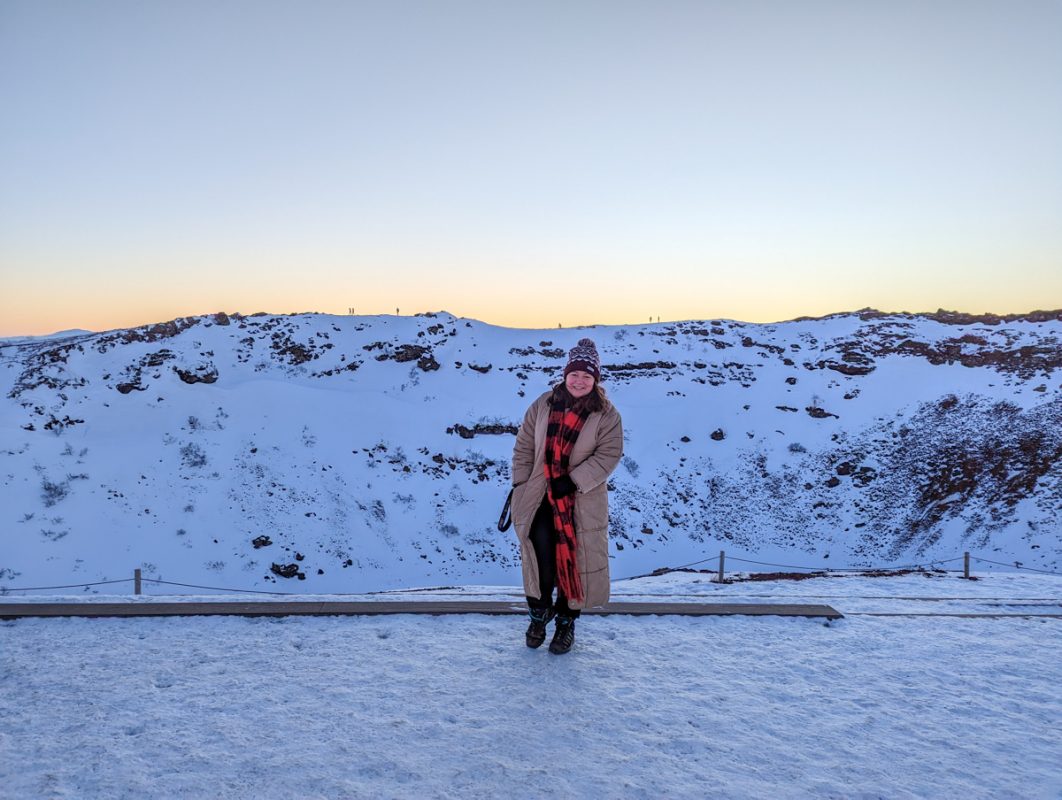
Is January a good time to go to Reykjavik?
Yes, January is definitely a good time to visit Reykjavik! The days are cold and short, but there’s a certain magic to the snow and lack of light – you can enjoy thermal baths, snowy scenes, welcoming museums and warm restaurants and hotels.
Can you see Northern Lights in Reykjavik in January?
Yes, January is one of the best times to see the elusive lights as it’s one of the darkest months of the year. However, it’s best to try to see them on a clear night, when they are most visible.
How cold is Reykjavik in January?
Reykjavik rarely has extremely cold weather even in the middle of winter, although it did when I was there! Normally the thermometer hovers around 0°C or 32°F. It can be much colder in the middle of the country, away from the coast.
What are the best things to do in Reykjavik in January?
The best things to do in Reykjavik in January include:
- hopping around cosy museums
- climbing to the top of the Hallgrimskirkja
- wrapping up and walking along the Shore and Sculptures walk
- the virtual Fly Over Iceland experience
- hanging out in cosy cafes and restaurants
- taking a wintery day trip
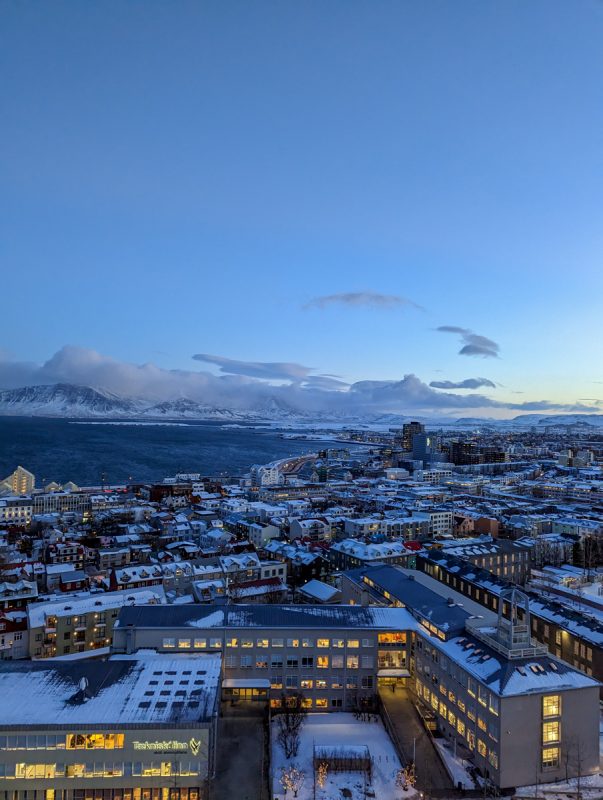
January may be one of the coldest months in Reykjavik, but as long as you pack some sturdy hiking shoes and thermal clothes, you can enjoy the geothermal pools, famous waterfalls, the city’s food scene and engaging culture to your heart’s content.
In fact, it’s one of the best winter city breaks in Europe for a completely unique atmosphere and culture.
Iceland is easily the most magical place I’ve ever been to, and the darkness of January only adds to its allure.

